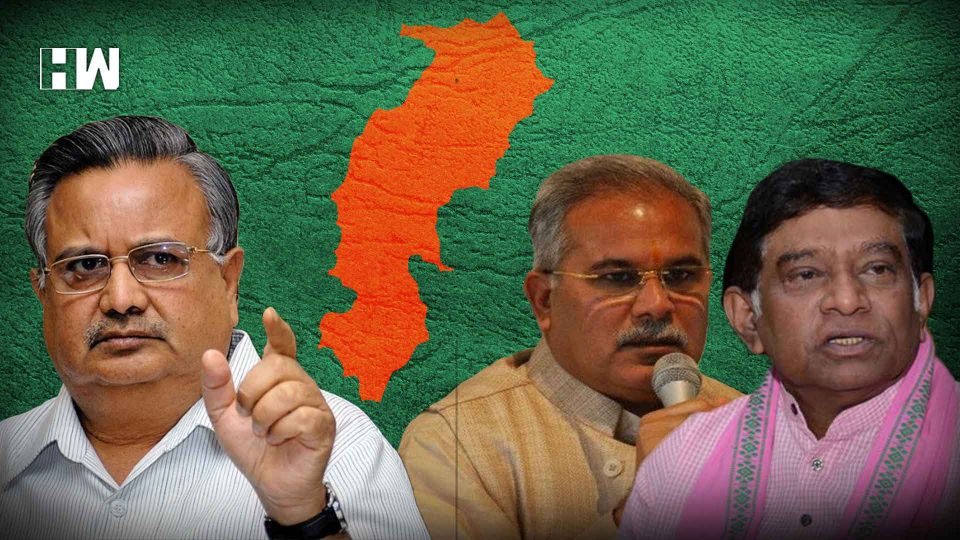The polling in Chhattisgarh will be held in two phase i.e. on November 12 for 18 assembly seats and November 20 for the remaining 72 seats.
The election commission on Saturday announced the dates for polling in the five states- Madhya Pradesh, Rajasthan, Chhattisgarh, Mizoram, and Telangana for the assembly elections. The Chief Election Commissioner OP Rawat informed that the polling in Chhattisgarh will be held in two phase i.e. on November 12 for 18 assembly seats and November 20 for the remaining 72 seats.
The gazette notification for the first phase will be sent in the state on October 16. The last date of filing nominations is October 23 while the last date of withdrawal of nomination is October 26. For the second phase, the gazette notification will be sent on October 26. The last date of filing nominations is November 2 while the last date of withdrawal of nomination is November 5. The counting of the votes will take place on December 11.
Here is everything you need to know about the state:
Demographics:
As per details from Census 2011, Chhattisgarh has a population of 2.56 Crores, an increase from figure of 2.08 Crore in 2001 census. Total population of Chhattisgarh is 2,55,45,198 of which male and female are 1,28,32,895 and 1,27,12,303 respectively. The population of Chhattisgarh forms 2.11 percent of India. According to a report by the government of India, at least 34% are Scheduled Tribes, 12% are Scheduled Castes and over 50% belong to the official list of Other Backward Classes. The plains are numerically dominated by castes such as Teli, Satnami, and Kurmi; while forest areas are mainly occupied by tribes such as Gond, Halbi, Halba and Kamar/Bujia and Oraon. A large community of Bengalis has existed in major cities.

Out of the total population of Chhattisgarh, 23.24% people live in urban regions. The total figure of population living in urban areas is 59,37,237 of which 3,035,469 are males and while remaining 2,901,768 are females. The urban population in the last 10 years has increased by 23.24 percent. On the other hand, the total rural population in Chhattisgarh is 1,96,07,961 i.e. 76.76 % of the total population.

According to the 2011 census, the majority of the Chhattisgarh’s population i.e. 93.25% practiced Hinduism, while 2% followed Islam, 1.92% followed Christianity. While Buddhist, Sikhs comprise 0.27% of the population, Jains are 0.24%. Sarnaism is the indigenous religion followed by the indigenous tribes of the state which comprises 3.01% of the population.
Voter Population:
The total number of electors as per draft electoral rolls is 1,81,80,422. However, the total number of electors as per final electoral rolls in Chhattisgarh is 1,85,45,819. According to 2013 Election Commission data, total number of electors were 1,68,95,762. Out of this, 8586556 were male, 8308557 were female and 649 were the third gender.

Constituencies:
The total assembly constituencies in Chhattisgarh are 90. Out of the total, 51 seats are available for general candidates, 10 seats are reserved for Schedules Caste candidates and 29 seats are reserved for Scheduled Caste candidates.

Major Political Parties:
There are total six national parties in the state including Bharatiya Janata Party, Bahujan Samaj Party, Communist Party of India, Communist Party of India (Marxist), Indian National Congress and Nationalist Congress Party. There are as many as five regional parties including Janata Dal (Secular), Janata Dal (United), Samajwadi Party, Shivsena, etc.

Chhattisgarh Assembly Elections 2013 result:
In the 2013 Chhattisgarh Assembly elections, Bharatiya Janata Party won 49 seats claiming the CM post while Indian National Congress won 39 seats. BSP and Independent candidate 1 seat each.The total votes polled for BJP were 5,365,272 with 41% vote share while total votes polled for Congress were 5,267,698 with 40.3% vote share. BSP received 5,58,424 votes with only 4.3 vote share.

Prominent Leaders:
Congress:
The Congress will project more than one probable chief minister in Chhattisgarh ahead of the assembly polls to woo the state’s powerful other backward classes (OBCs). Kurmis and Sahus are two dominant communities among OBCs and account for around 36% of the state’s population.

Bupesh Bhagel, a Kurmi, and Tamradhwaj Sahu will be among the prominent faces for the party’s election campaign, the leaders said. Sahu is a member of the Congress Working Committee (CWC), the party’s highest decision-making body, while Bhagel is the party’s state chief.
BJP:
One of the most famous and powerful political leaders in Chhattisgarh, Raman Singh is a member of the Bharatiya Janata Party and is also currently serving as the Chief Minister of Chhattisgarh. He won re-election in 2013 for his third tenure as CM of Chhattisgarh. He launched various schemes a few months before the elections to woo tribals, youngsters and women. The most important is the SKY scheme, which aims to distribute 5 million smartphones.

Janata Congress:
Ajit Jogi who has been a Chief Minister of the state when he was a Congress member, founded Janata Congress after breaking away from the party. However, he still is a popular face in Chhattisgarh and his alliance with BSP is speculated to impact more than a dozen seats in the state.
As an independent media platform, we do not take advertisements from governments and corporate houses. It is you, our readers, who have supported us on our journey to do honest and unbiased journalism. Please contribute, so that we can continue to do the same in future.


